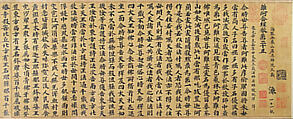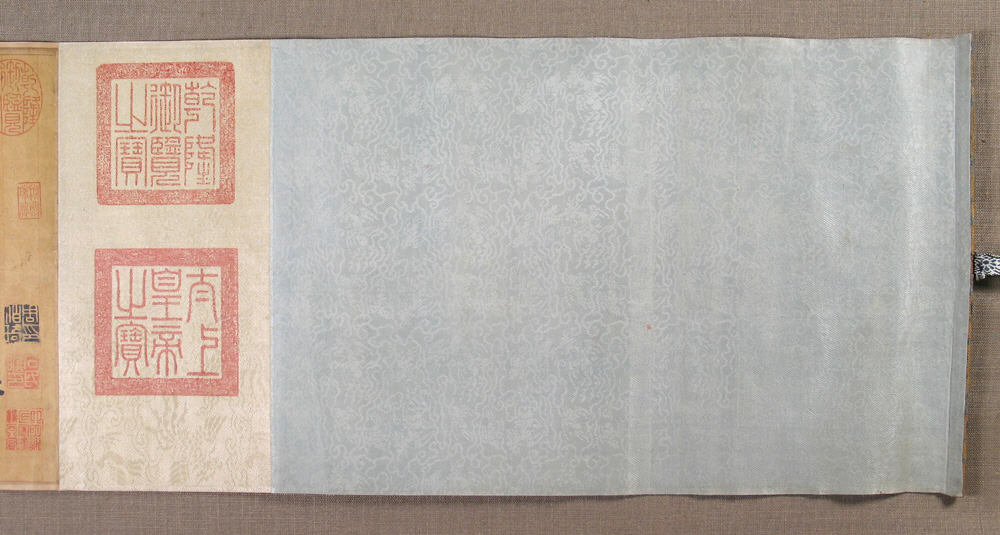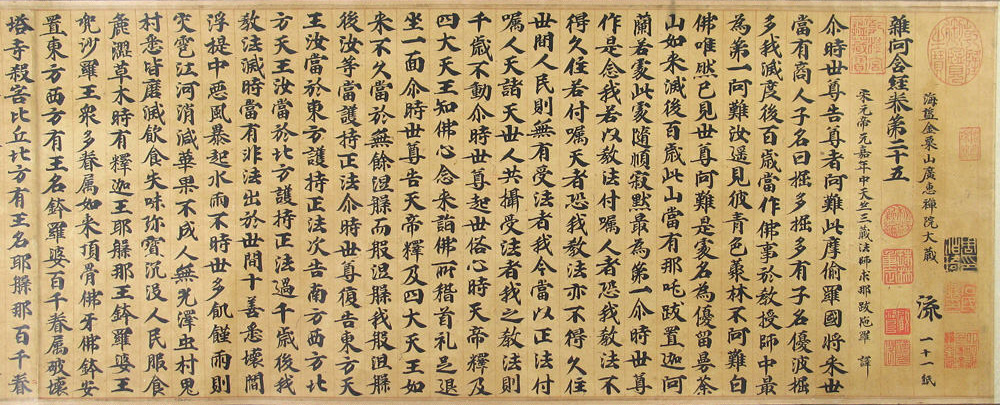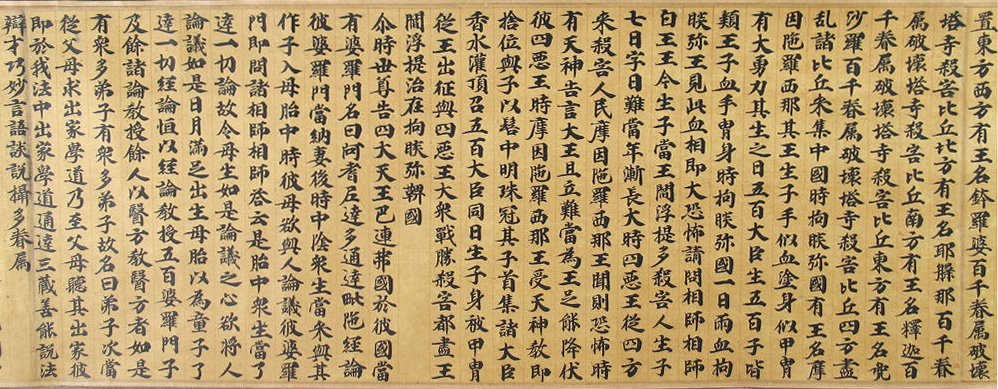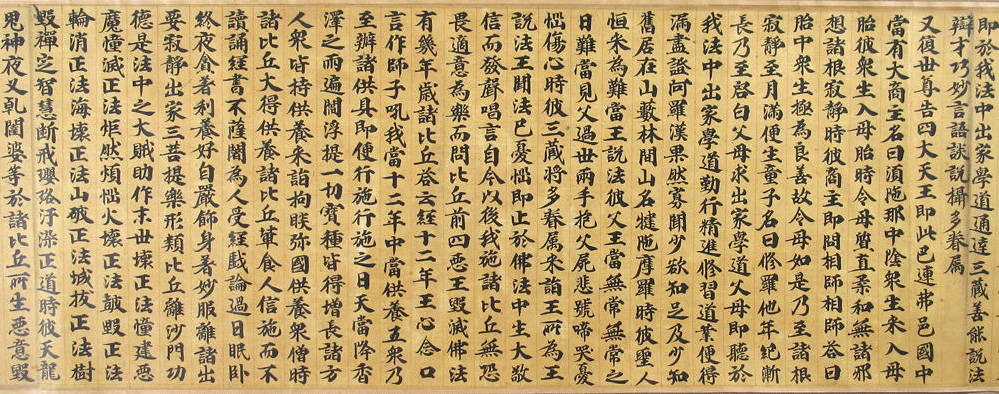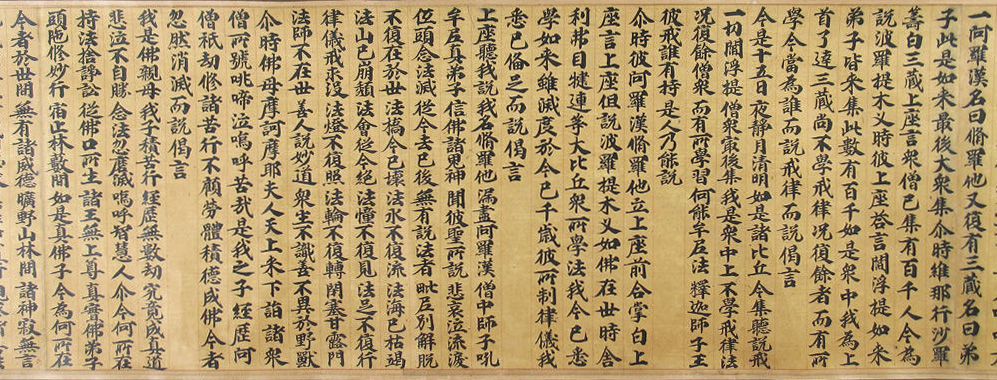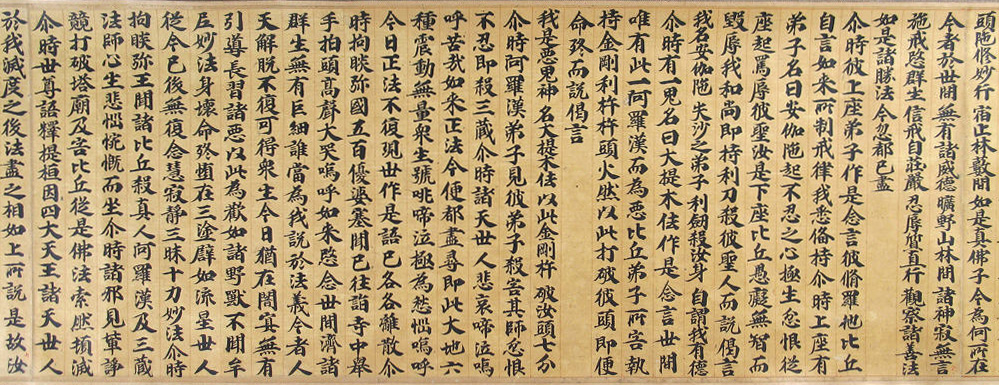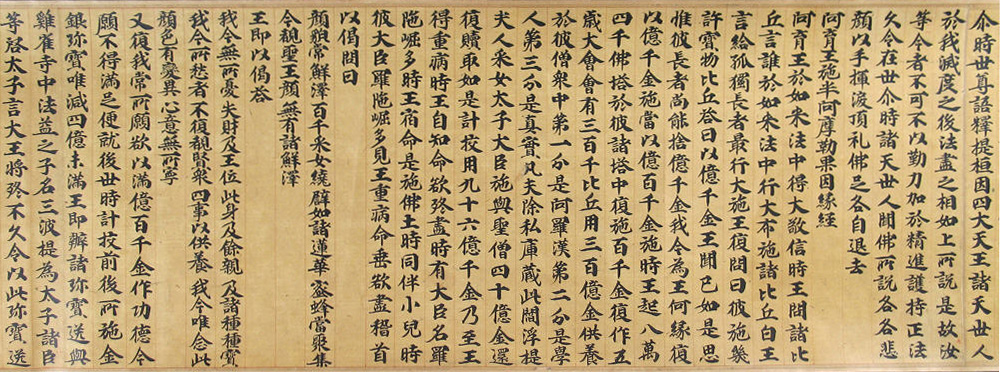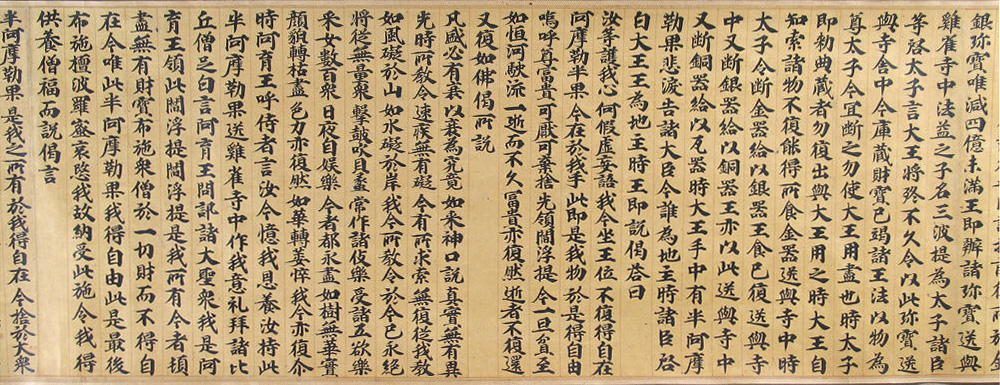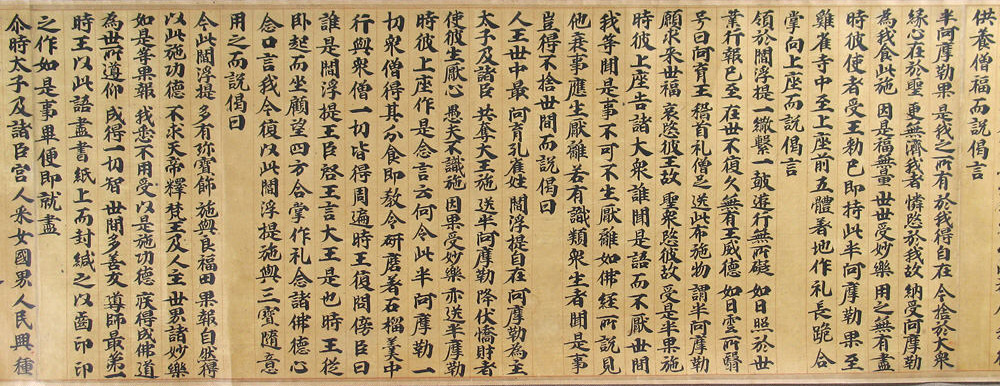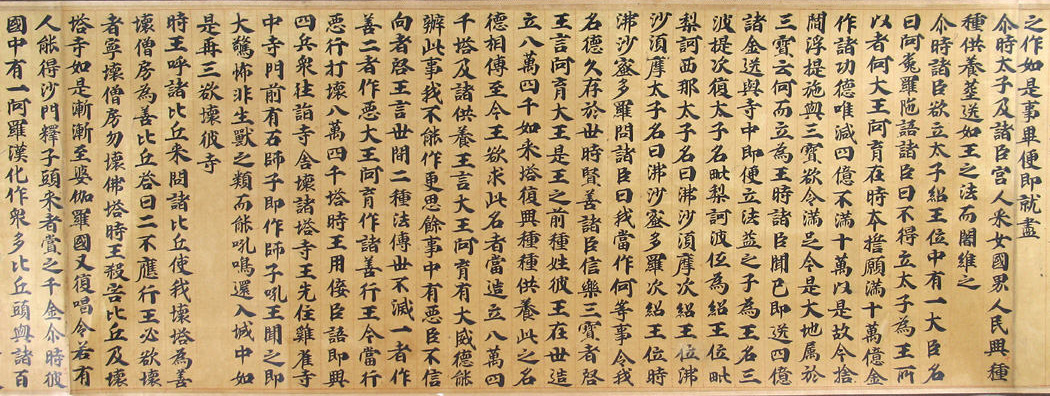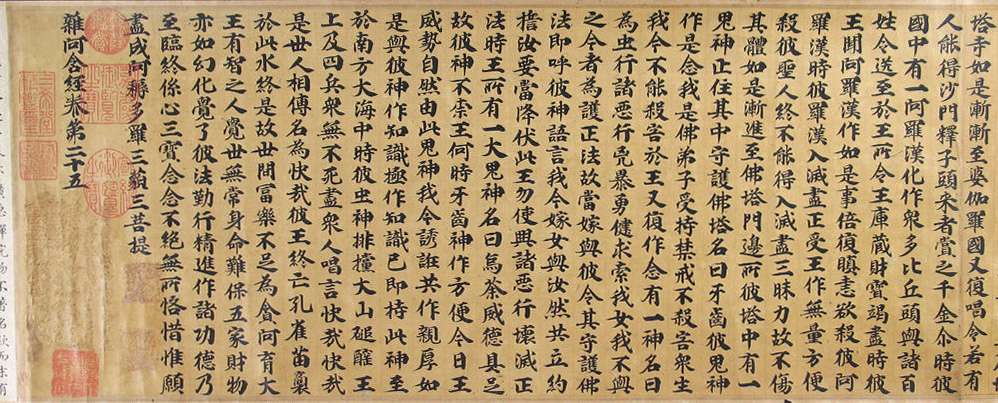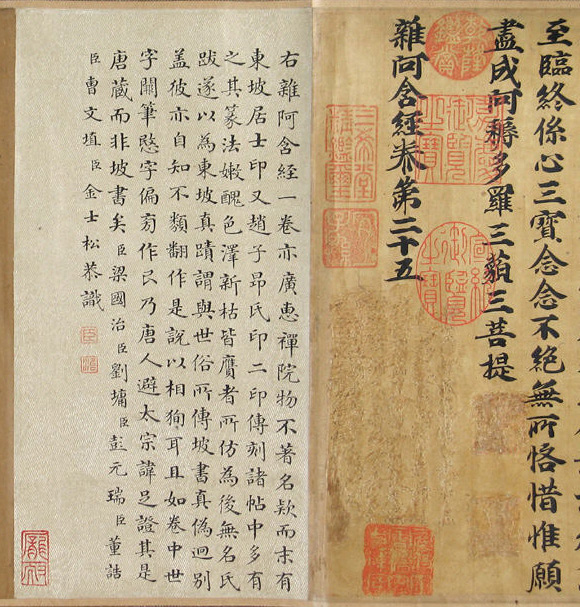Samyutagama Sutra, chapter 25, from the Jinsushan Tripitaka
Not on view
In the 1060s, the Chan monastery Guanghuisi in Zhejiang Province commissioned a complete handwritten copy of the Buddhist canon, a vast undertaking. Though woodblock printing was already becoming popular for large projects, the monastery persisted with hand-copying. The calligraphy is based on the highly regularized “sutra script” that had been in use for centuries, but the scribes at Guanghuisi wrote in thick, muscular lines that add a solidity to this formal script type. The monastery also made their own paper for this project, which has been highly valued by collectors ever since.
Due to rights restrictions, this image cannot be enlarged, viewed at full screen, or downloaded.
This artwork is meant to be viewed from right to left. Scroll left to view more.
